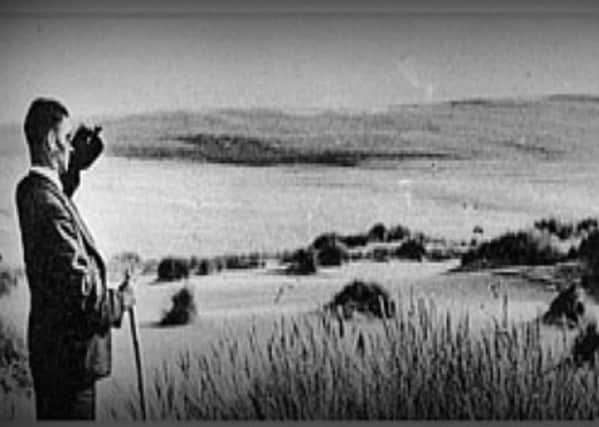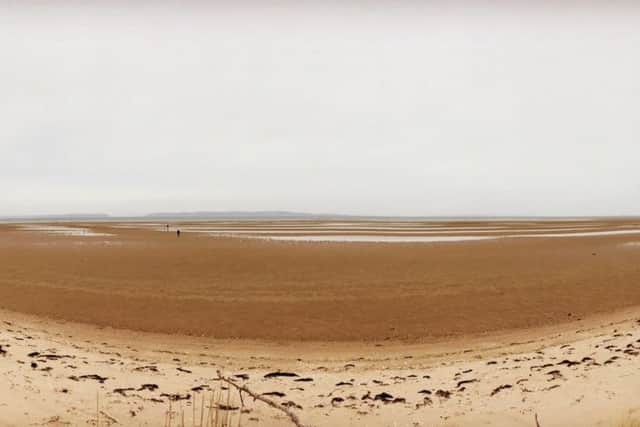The community that vanished in a sandstorm


Many myths and legends have evolved surrounding the events of 1694 with the natural disaster linked to a divine intervention with some viewing the storm as a possible punishment for whisky smuggling or even playing cards on a Sunday. Here, an expert from Forest Enterprise Scotland, which manages part of the site, looks in detail at the catastrophe at Culbin.
A community on the Moray coast had been struggling against a wastrel laird, shrinking cultivatable areas, poor harvests and the shifting sands for centuries.
Advertisement
Hide AdBut it was a sandstorm that finally finished off the estate at Culbin on the Moray coast in 1694.


There are many ‘lost villages’ dotted around the coast of northern Scotland and its islands, the most famous of which is the World Heritage Site prehistoric village at Skara Brae on Orkney.
Some have been abandoned through coastal erosion, others through shifting sands.
At Culbin, the uprooting of marram grass for thatching, and possibly the cutting of coastal turf as a fuel source in the 17th century, contributed to the mobility of the sand. Whilst the 1694 storm was likely an immense event, loss of land to the sands would have been a long, gradual process, culminating in this storm.
With our current knowledge, we can look at likely scientific explanations for the sandstorm that engulfed Culbin, but in the past, a devout yet superstitious society would have sought other ways to account for this apparent ‘divine retribution’, giving rise to legends involving all kinds of devilish conduct and wrong-doing. These legends have been embroidered over the centuries.
Archive research has shown that there were likely only 5 farms and some 735 acres of cultivated land, however, the Kinnaird Estate was said to comprise a great house, church, thousands of acres of fertile lands and orchards and up to sixteen associated farms.
Advertisement
Hide AdThe most extensive dune system, Lady Culbin, was said to have covered the site of the mains house, although this in fact lay 1.5km to its south.
Another dune, called The Armoury, was supposed to lie over the smithy, where Rob the Smith was said to have been involved in warlockry and made ‘elf bolts’.
Advertisement
Hide AdElsewhere in Celtic Britain, a character ‘Rob’ would shoe horses left on burial mounds overnight and make drinking vessels from the skulls of his enemies.
Young Kinnaird’s devastating loss of the estate was explained in a number of ways. One legend suggests that it was the result of a curse as Kinnaird had been quick to condemn some local crones for witchcraft; another that it was a result of his disregard for the Sabbath.
He is said to have been playing cards late one Saturday night and, despite being reminded, insisted on playing past midnight, boasting he would play on even if the Devil were one of his partners. Needless to say, after a clap of thunder the Devil appeared, and the game went on so long that Kinnaird failed to notice the sand engulfing the estate.
Some also saw the sandstorm as punishment for having hidden smugglers regularly amongst the dunes - this explanation was doubtless encouraged by the local minister and exciseman!
According to some, the constantly moving sands seem to have shifted enough over the years to reveal a dovecote, chapel and even parts of a manor house (perhaps during the big storm noted above in about 1800). Much of the stone was robbed for use at local farms. The chimney of the house was apparently once revealed, although a brave soul who shouted down it was so frightened by the strange ghostly reply (or echoing) he heard, that he legged it!
Another local legend claims that as the sands continued to shift, the Laird’s orchard was revealed - or at least the top branches of some of the trees - and that they blossomed and bore excellent fruit.
Advertisement
Hide AdThere are many stories about buried treasure revealed and lost amid the dunes, including one about a cargo of illicit import of tobacco and whisky that was buried by the smugglers overnight until it could be safely moved from the shore.
When the smugglers returned the next day, the wind had moved the sands so much that they could not find their stash - and neither could local search parties who set out to try and discover it for themselves soon after. Apparently they worked all night by the light of a bright moon.
Advertisement
Hide AdCulbin became a romantic desert as attitudes changed towards the landscape in the 1800s. Many writers, poets and dramatists have written of Culbin’s end. Andrew Young’s work entitled ‘The Culbin Sands’ includes the following verses, which nicely sum up the feeling of Culbin’s constant capacity for amazing natural change:
Here lay a fair fat land
But now its townships, kirks, graveyards
Beneath bald hills of sand
Lie buried deep as Babylonian shards
But gales may blow again
And, like a sand-glass turned about,
The hills in a dry rain
Will flow away, and the old land look out.
Culbin’s story is far from completely explained or understood, and as the sands and tides continue to shift - and our own climate continues to change - more of its past may yet be revealed to future generations.
This article originally appeared on the Forestry Commission Scotland website.
